The Big Five - 27 October edition
My regular update on conflict and confrontation in Ukraine, the Middle East and the Pacific, accompanied by recommended readings on the character of modern war and planning for future conflict.
Ukraine will be forced to actually fight against North Korea in Europe. President Zelenskyy, 26 October 2024
Another hectic week as the confrontation between the authoritian powers and Western nations continues. This week, updates from the three key theatres: Ukraine; the Middle East; and, the Pacific as well as my Big Five reading recommendations.
Ukraine
The major news this week has been the deployment of North Korean forces to Russia for likely employment against Ukraine. They are likely to be a logistical burden for the Russians and there will be cultural, doctrinal and tactical tensions with the integration of the North Koreans into Russian forces. Given the size of the North Korean contingent, they are unlikely to have a decisive impact on the war in Ukraine. Russia is currently suffering around 1200 casualties a day in Ukraine. The North Koreans represent about a week’s human expenditure by Russia.
However, if these deployments are conducted more regularly, they could be a way for Russia to sustain the current offensive in the east of Ukraine AND sustain high numbers of casualties without having to undertake another mobilisation in 2025.
North Korea, which already supplies rockets and artillery munitions to the Russian war effort, has much to gain from becoming a co-belligerent in the war against Ukraine. Politically, it ensures it has a grateful “fellow traveller” in Russia. Additionally, Russia may provide an array of financial incentives for North Korea’s troop deployment. It is likely to share with North Korea many of the new tactics and technologies developed for the war, as well as intelligence on captured Western equipment. Less likely, but still possible, the Russians could share technology to enhance the capacity of North Korea’s nuclear weapon delivery systems.
As I wrote in my Sydney Morning Herald article this week, there is a geopolitical aspect to the North Korean deployment:
There is also a significant geostrategic impact from the North Korean deployment. The authoritarian quad of Russia, China, Iran and North Korea has been waging an information, influence and economic war on Western nations, and the post-World War II international system, for some time. The speeches of Vladimir Putin and Xi Jinping are replete with references to their war against NATO and the West. But this North Korean deployment to Ukraine is an escalation in the confrontation between the forces of authoritarianism and the democracies of Europe, Asia and North America.
Besides quasi-strong words (“very, very serious” from the U.S. SecDef), political leaders in Europe and America are yet to act decisively to punish North Korea or deter future deployments. I am not holding my breath that they will. And as I write this, around 5000 North Korean soldiers appear to be in the course of deploying to Kursk to assist Russia in fighting Ukrainian forces lodged there.
In Kursk, Ukrainian forces continue to hold onto a significant salient inside Russia. While President Putin has made claims about Ukrainian forces there being surrounded, these were quickly refuted with the facts. The frontline in this campaign remainded largely unchanged over the past week.
While we may see North Korean soldiers arrive in this part of the theatre over the coming weeks, it is hard to imagine they will make a significant difference in Russia’s campaign to push the Ukrainians back across the border.
On the eastern front, and despite the arrival of some rain and muddy conditions, the Russians are sustaining their eastern offensive. They have continued to eke out small gains on multiple fronts despite their losses now apparently hitting a record average daily high for the war so far. The UK defence intelligence staff reported in September that Russian casualties were averaging 1000 per day in September. The Ukrainian general staff released figures stating that Russia had lost 1600 soldiers in just one day this week. This is unverified.
This eastern campaign, according to the Centre for Defence Strategies, aims for the following in the short term:
The enemy's military command in the theater of operations within the following 2-3 months will concentrate its efforts on achieving the military-political goal of the Special Military Operation: reaching the administrative borders of Donetsk and Luhansk Oblasts. For this purpose, they will maximize their advance towards Pokrovsk-Pavlohrad, in the direction of the Sloviansk-Kramatorsk agglomeration, and aiming to reach the junction of Zaporizhzhia, Dnipropetrovsk, and Donetsk Oblasts near the village of Temyrivka.
Interestingly, the Russians are reported to be deploying reserves to the Zaporizhzhia region, and intensifying their attacks on that axis of advance. According to the Centre for Defence Strategies, the Russian reconnaissance and sabotage groups are increasing their probing of Ukrainian defenses there for vulnerabilities.
Overall, the eastern offensive continues to be Russia’s main effort in their war against Ukraine. Their efforts are designed to gain territory, wear down Ukrainian forces, place them in a dilemma about the deployent of reserves (Kursk, the east or the south?) and to project a strategic narrative of hopelessness of the Ukrainian cause for whomever wins the coming U.S. presidential election.
While much attention focussed on the North Korean issue this week, Russia continued its drone and missile attacks against Ukraine. In its latest attacks, Russia targeted Dnipro, Kyiv and the town of Kostyantynivka in the Donetsk region. More than two dozen people were injured and five killed.
This week, the Center for Strategic and International Studies launched an interactive site that examines the daily and cumulative trends of Russian missile attacks on Ukraine. This includes the number of missiles launched, types of missiles used, and the success of Ukrainian intercepts. You can see the dashboard at this link.

This week, the White House announced that G7 countries would provide Ukraine with $50 billion covered by the proceeds of frozen Russian assets. These funds will be used to provide financial and military assistance to Ukraine. Known as Extraordinary Revenue Acceleration (ERA) Loans, can read all about it here.
Also this week, Rheinmetall opened the first of several factories it is developing in Ukraine. The first plant, designed for the production of armoured vehicles, was opened this week. Subsequent production facilities being developed in Ukraine by Rheinmettal include munitions and explosive content. Given the shortfalls in Western production capacity, and the uncertainty about future military aid from abroad, indigenous production of large quantities of defence materiel is a necessary pathway for Ukraine.
Middle East
The big news this week was the Israeli strike on targets in Iran. Conducted across three successive waves, the Israelis struck Iranian air defence targets initially, including tagets in Iraq and Syria. Sources such as Critical Threats and The New York Times describe the Israeli raid being comprised of over 100 crewed and uncrewed aircraft.
The second and third waves of the Israeli attack then proceeded to hit multiple targets associated with Iran’s various missile programs. One of the key targets was the Parchin military complex, located to the east of Tehran. It is one of Iran’s most sensitive defense production locations. Parchin has been used to research and build explosive materials and advanced munitions, including drones and missiles. The Parchin site has also played an important part in the Iranian nuclear weapons program.
The Israeli’s also struck the Khojir military complex, which is used in the development and manufacture of ballistic missiles. The site was expanded in 2023 by Iran, with many of the buildings protected by high earthen berms. The expanded capacity, according to a July 2024 Reuters report, would have permitted the Iranians to increase the export of weapons to Hezbollah, the Houthis and Russia.
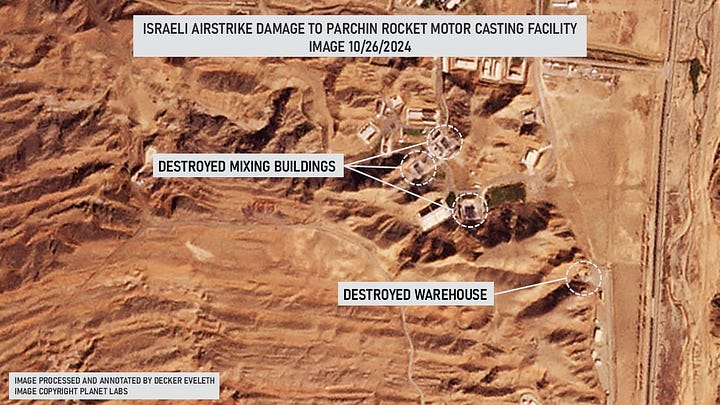
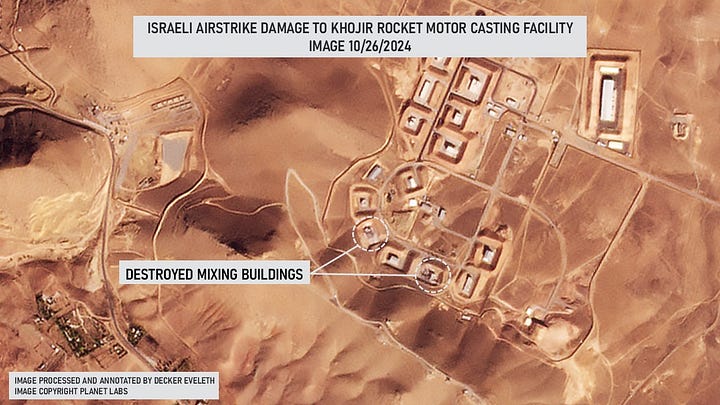
Overall this was a proportionate Israeli response to Iran's previous attack on Israel. It was also a pragmatic response: the attacks degrade Iran's capacity to make missiles for its own purposes or send them to the Russians, Hezbollah and the Houthis. This is a good outcome, although one that Iran will be able to remediate within a year or two.
The Friday night attack by the Israeli also sent a message to Iran's leaders. By avoiding energy, nuclear and leadership targets, Israel is telegraphing the following to the Iranian regime: "If you don't attack us again, we won't need to target your senior leadership. If you do, we might."
The Iranian response was telling - "limited damage" and "missiles were intercepted" gives them plausible cause to not retaliate against this Israeli strike. The Iranian response so far could be code for "we see this as the end of the matter - at least for now". Although, in the Middle East, nothing is ever “the end of the matter”.
The Pacific
This week, the U.S. approved a $2 billion arms sale to Taiwan. The package included three new and sophistocated National Advanced Surface-to-Air Missile System (NASAMS) medium-range air defense systems.
The Chinese Coast Guard this week harassed Indonesian survey vessels inside Indonesia’s EEZ. This comes just a few days after the inauguration of the new Indonesian President, Prabowo Subianto. The Indonesian Navy replenishment vessel KRI Bontang was dispatched to assist the Indonesia Maritime Security Agency patrol ship KN Pulau in shadowing the China Coast Guard 5402, which was harassing Indonesia's survey activities.
Recently, Joel Wuthnow published an excellent analysis of what might happen should the PLA attempt to invade Taiwan and fail. Called China’s Forever War: What If a Taiwan Invasion Fails? this is another in a long series of excellent analyses from the author. In his report, Wuthnow notes that “a failed People’s Republic of China (PRC) attempt to seize Taiwan would only be one step in a much longer conflict. Beijing will learn, rebuild, and may try again.” He describes four different scenarios that military and policy experts should consider:
Prolonged Blockade. The CCP elite has been humiliated and its top leader—reeling from the setback and on shaky political ground at home—decides that there is a political necessity to inflict further punishment on Taiwan.
Return to the Gray Zone. Understanding that another invasion would likely fail and judging that continued major combat operations would extend an international sanctions regime, the PLA shifts back to coercive but nonkinetic operations.
Crisis Instability. The CCP leadership fractures over the leader’s decision to launch the invasion, with some expressing support despite the results and others harboring grievances. They look for game-changing moves that would send a strong signal of resolve, but not invite a preemptive or retaliatory strike against the mainland, including a reversible antisatellite attack, a high-altitude electromagnetic pulse, or launching a theater-range nuclear weapon into the open ocean as a demonstration.
Recapitalization. Despite, or perhaps because of, heavy casualties, the CCP remains highly unified, and there is no risk of removal for the top leader. The overriding goal for the regime is to reconstitute a credible warfighting capability.
You can read this excellent report here.
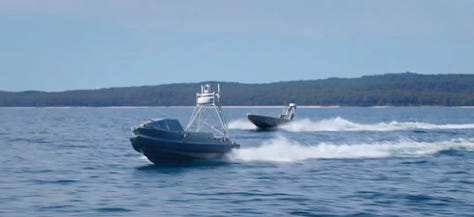
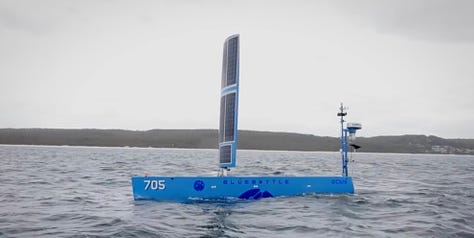

Finally, this week Australia, the U.S. and the U.K. wrapped up a three-week-long tri-lateral exercise to test an array of autonomous martime capabilities in Jervis Bay on the Australian east coast. Called Exercise Autonomous Warrior 2024 by Australia, and the Maritime Big Play (MBP) initiative by the Pentagon, the exercise was designed to improve the capability for AUKUS nations to jointly operate uncrewed maritime systems, share and process maritime data and employ real-time maritime domain awareness in decision-making.
*******
This week I travelled to Canberra for a book event for The War for Ukraine, to give a presentation at the National Security College, as well as to attend a couple of activities related to the Australian Army’s employment of drones. Part of that was an event for the release of Oleksandra Molly’s excellent new report on drones in Ukraine, which was published by the Australian Army Research Centre (see link to the report below).
I also did two podcasts: one for Times Radio and one with Eric Edelman and Eliot Cohen on their Shield of the Republic podcast. You can listen to it here. I also published an article here on the North Korean deployment to Ukraine, as well as an article in the Sydney Morning Herald.
So, to this week’s best articles.
A few different subjects are covered in this week’s recommendations. There are two on the employment of drones in modern war, as well as an article on the potential for amphibious operations in Europe. There is a good piece that explores how the Chinese PLA’s kill chain might be degraded, and finally, an article on Russia’s systemic execution of Ukrainian prisoners of war (PoW).
As always, if you only have time to read a single article, the first one is my pick of the week.
Happy reading!
1. Precision + Mass in Modern War
This week, Michael Horowitz’s new article on drones in modern war was published in Foreign Affairs. Horowitz, a long-time expert on new technologies who also worked in the Pentagon this issue, writes that “the current age of warfare is collapsing the binary between mass and precision, scale and sophistication. Call it the age of “precise mass.” It is a great article, and can be read here.
2. Breaking China’s Kill Chains
This article explores how the U.S. Space Force is study methods to break the kill chains of the People’s Liberation Army. Kill Chains are the contemporary term for how military institutions close the gap between detection and destruction of a target. A kill chain includes sensors (including people), communications, target analysis, human-decision-making and prioritizing targets, weaponeering, strike operations and post-strike assessment. There are lots of potential vulnerabilities to attack. You can read the full piece here.
3. Russia’s Systemic Executions of PoWs
The growing number of cases of Russian executions of Ukrainian PoWs, which is explicitly forbidden under the Geneva Conventions, indicates either a systemic approach by Russian leaders or their total disinterest in the conduct of their soldiers. Either way, General Gerasimov and his subordinate commanders are responsible. You can read the most recent piece on this here.
4. Drones in Modern War
This week, the Australian Army Research Centre released a new report on drones in modern war, particularly with regard to the lessons from the war in Ukraine. With deep research by Australian-Ukrainian researcher Oleksandra Molloy, this report provides many useful insights into drone employment, operator training and adaptation in Ukraine. You can read the report at this link.
5. Amphibious Operations and Europe
An interesting article from the Wavell Room that explores the following question: What can you do with amphibious forces given current area denial, especially sea denial, measures; particularly in Europe? You can read the full article here.




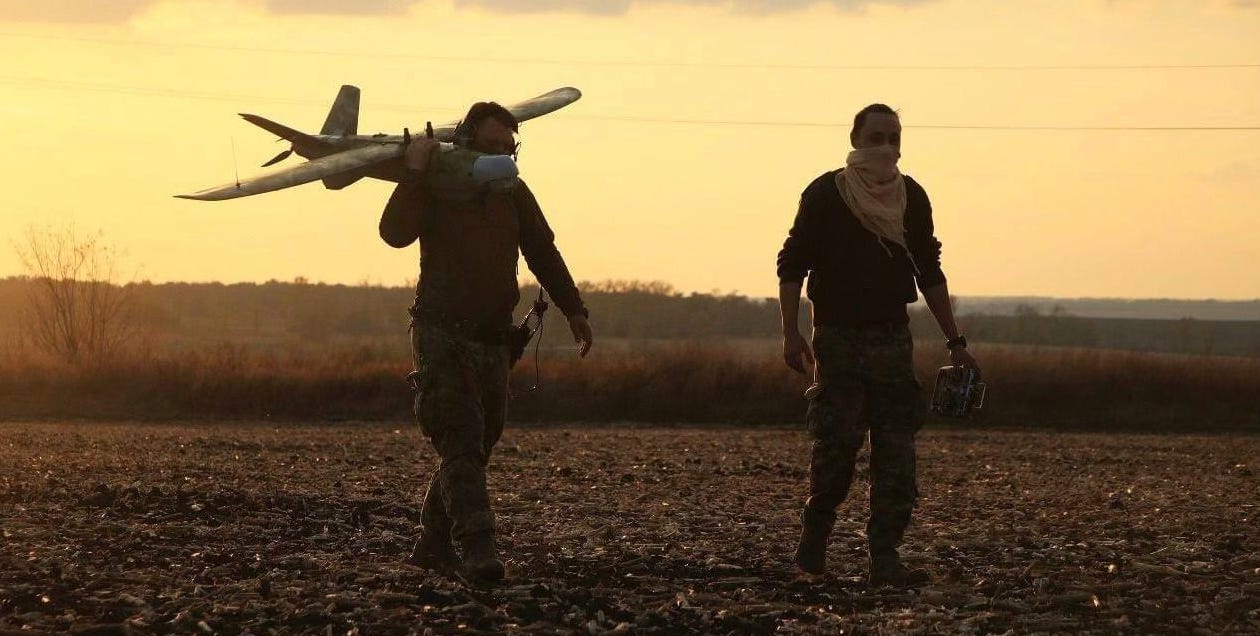
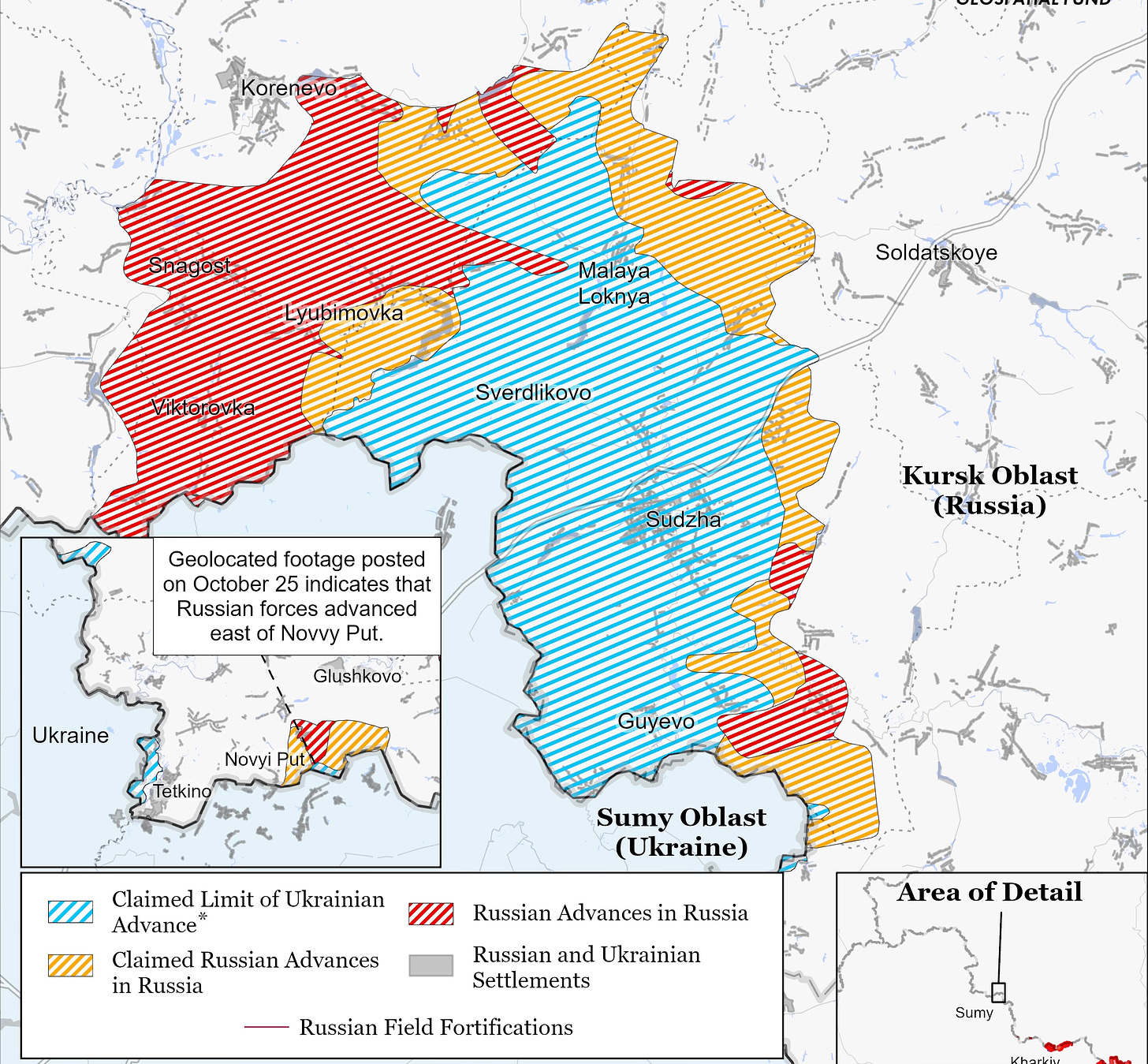

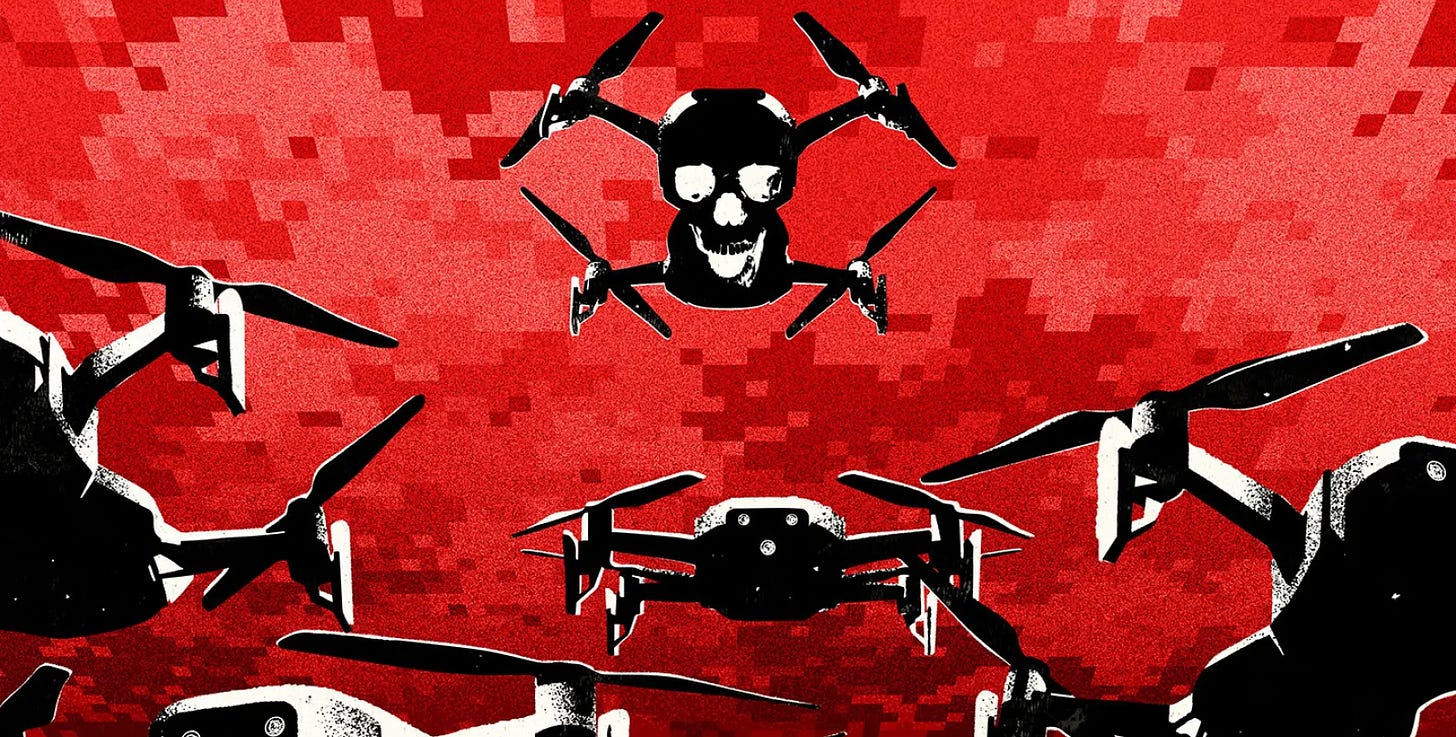
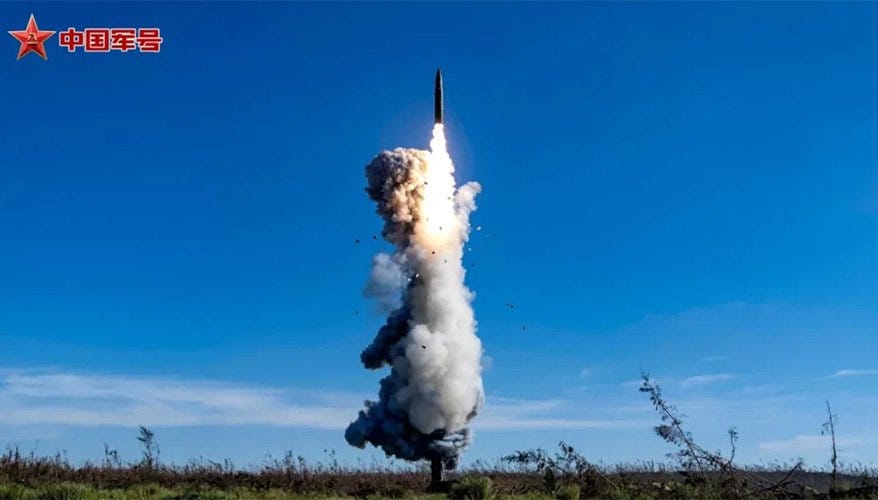
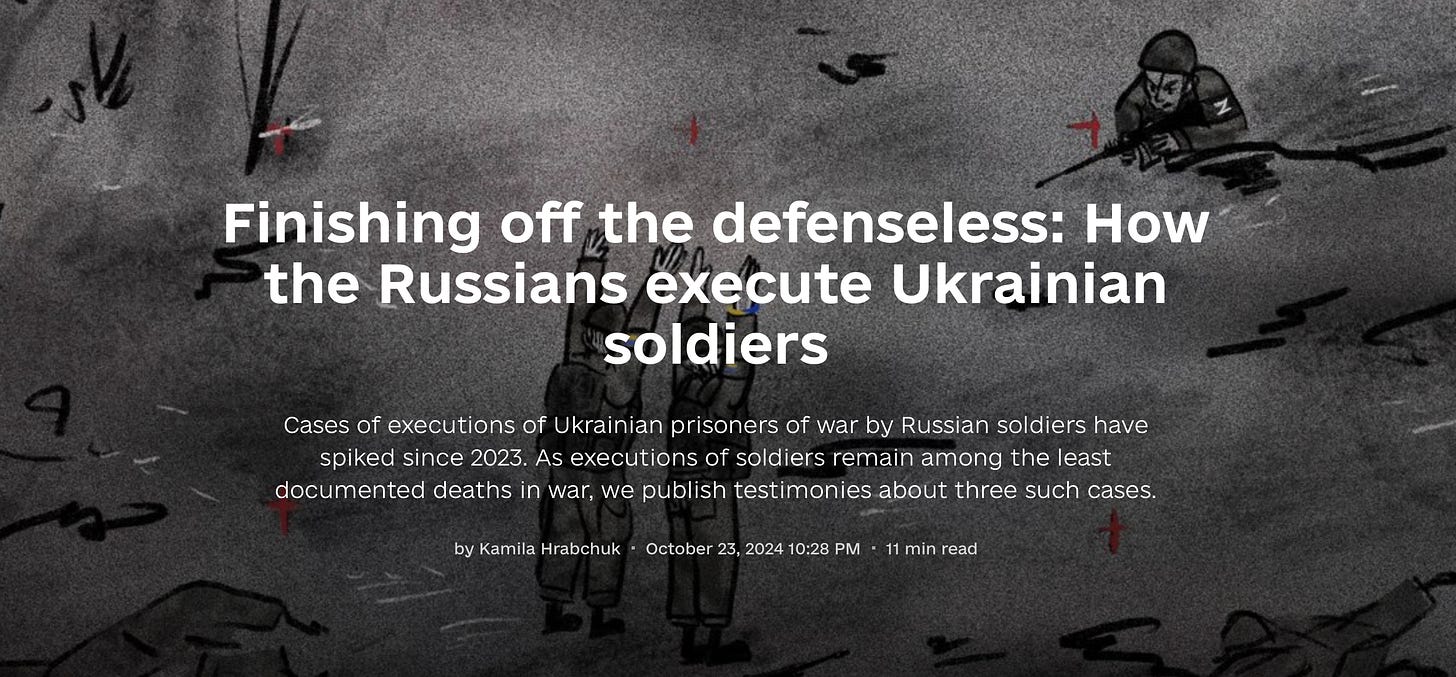

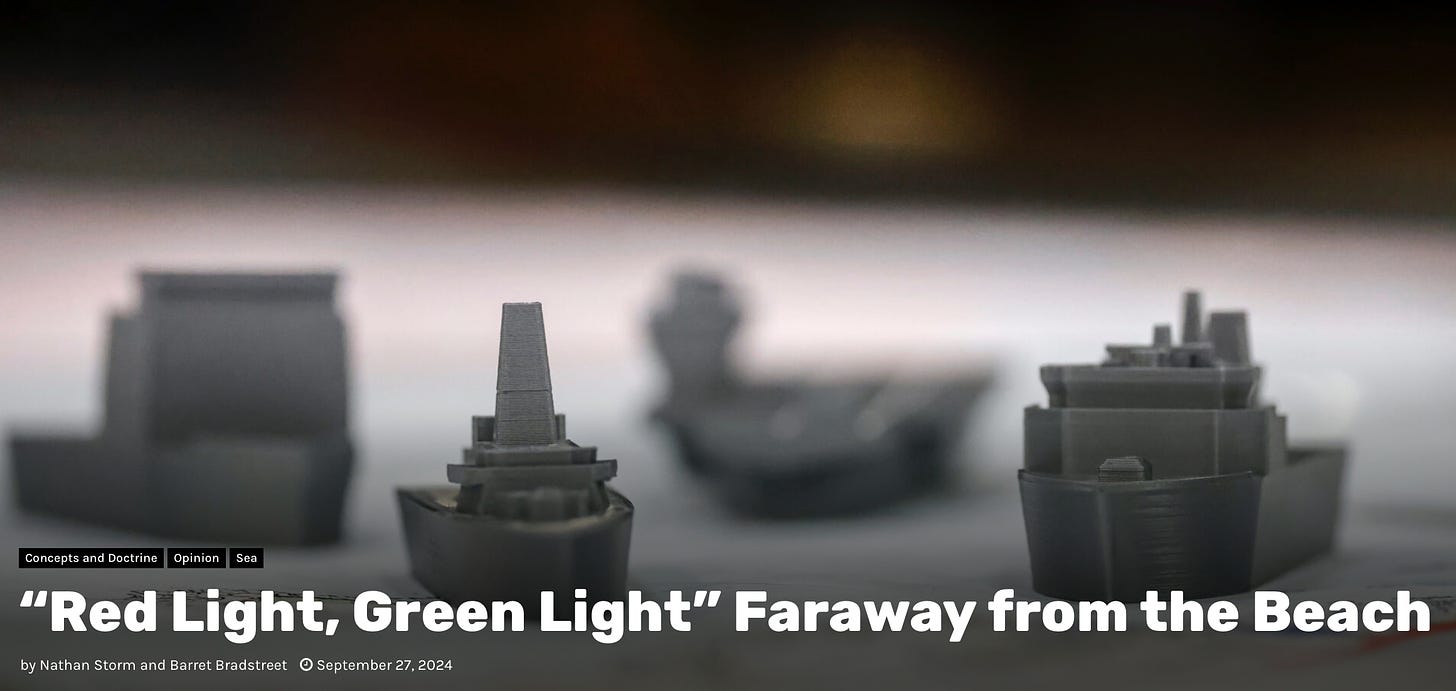
Very good summary, of what is continued instability across the world. Thank you.
Please discuss how China could fail in a kinetic annexation of Taiwan. China has massive missile forces to deny US naval access and can damage bases in Guam. Japan and S Korea will be threatened too so an alliance may not hold. And would a US president (meaning Harris) accept the loss of 5500 Americans and their aircraft carrier without a massive retribution on China? Would the US be forced to use a demonstration nuke or a tactical nuke on a Chinese military site?